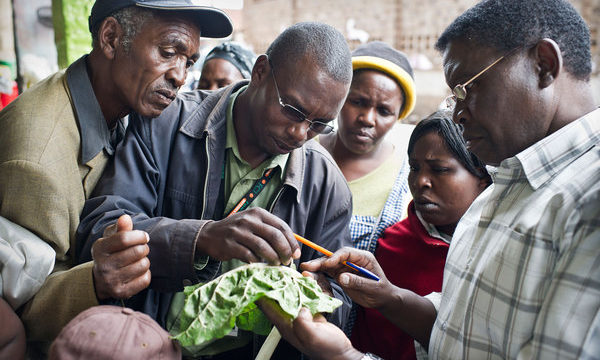
Coast live oak showing sudden oak death symptoms (Credit: Joseph O’Brien, USDA Forest Service, Bugwood.org)
The history of diseases that have affected a plant can determine the ability of its progeny to cope with similar diseases. Studies have revealed that, in many cases, progeny of a plant that was diseased develops tolerance to similar stresses in just a few generations, far too quick to be explained by chance mutations. It is here that scientists believe epigenetic mechanisms play a role.
Early understanding of inheritance suggested that traits were heritable only when there was an alteration in the underlying genetic code, i.e. DNA of an organism. Today, epigenetics, the study of heritable changes by mechanisms other than inheritance by DNA is well established and has improved understanding of disease problems in animals and plants. Accordingly, as plants grow, they are subjected to various environmental stresses, which result in ‘superficial’, reversible modifications to the DNA and chromatin (structures that condense to form chromosomes). These in turn can alter gene expression, i.e. which/when genes are turned on or off helping the plant adapt to the environment. Later, when plants reproduce, this stress memory is passed on to the next generation making the progeny more tolerant.
Interestingly, pathogens use epigenetic modifications for their benefit too. Hüberli and Garbelotto showed that the history of different hosts which a pathogen has infected could affect its virulence. In the Sudden Oak Death pathogen, Phytophthora ramorum, different hosts respond differently to the pathogen. Infections on bay laurel are sub-lethal to the plant but serve as excellent reservoir of spores. On oak trees however, the disease is lethal but the pathogen does not sporulate (oak to oak infections are thus rare). The researchers found that isolates obtained from bay laurel, are more pathogenic than those obtained from oaks and suggest that these differences have an epigenetic origin.
Epigenetic variation can thus play multiple roles in disease development and need to be better understood to manage plant diseases better.
References
Boykoa, A., and Kovalchukb, I. (2011) Genetic and Epigenetic Effects of Plant–Pathogen Interactions: An Evolutionary Perspective. Molecular Plant 4(6): 1014-1023. doi: 10.1093/mp/ssr022
Hüberli, D. and Garbelotto, M. (2012) Phytophthora ramorum is a generalist plant pathogen with differences in virulence between isolates from infectious and dead-end hosts. Forest Pathology 42: 8–13. doi: 10.1111/j.1439-0329.2011.00715.x
2 Comments
Leave a Reply
Related News & Blogs
Improving resistance of Kenya’s cabbage and kale crops to TuMV disease
Farmer tending to her crop of kale. Photo: C. Nellist A team of international scientists from CABI, the Kenyan Agricultural and Livestock Research Organisation (KALRO), NIAB EMR (UK), University of Warwick (UK) and Syngenta (Netherlands) are seeking to…
13 September 2019



[…] Epigenetics- A New Dimension to Understanding Plant Disease by Sara Thomas […]
Could it be possible to produce a specific pathogen (for example; bean common mosaic virus (BCMV)-seed borne) resistance by exploiting this Epigenetic idea?